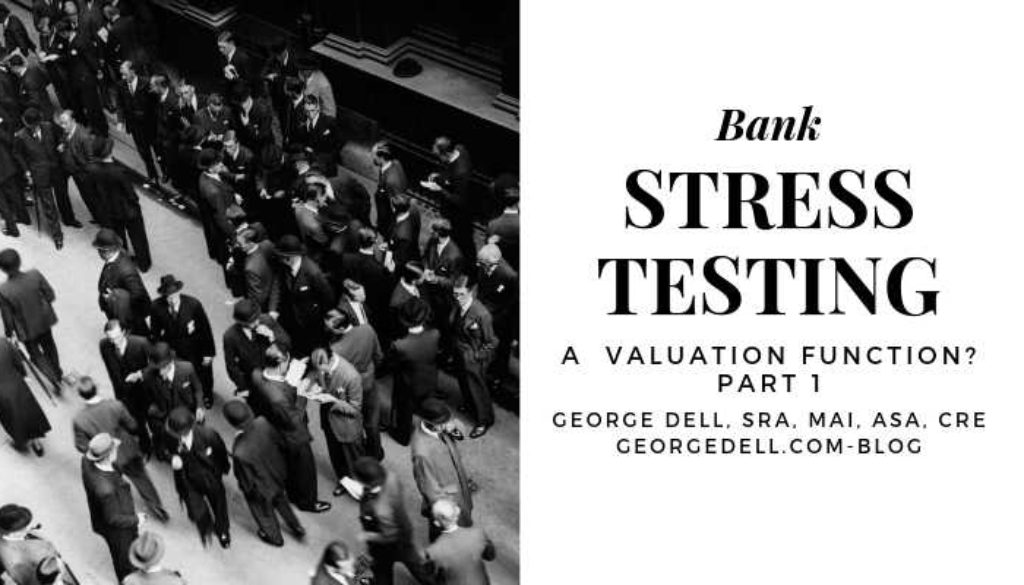Stress testing of regulated banks forecasts how declining economic conditions may impact bank safety. Loans, secured by real property can be significant in the overall portfolio of a bank. This property collateral portfolio itself will have different characteristics, depending on the locations, property types, and business types involved in the underlying collateral. Different properties will be affected by different scenarios in different ways.
Here, we begin to search how property valuation, using today’s data science principles can provide a deeper, complete, and enhanced data stream for measuring risk at the individual property level, at the portfolio level, and in terms of forecasting and near-real-time revaluation.
There are two issues:
- How important is the bank collateral to the overall financial condition?
- What is the sensitivity of the collateral to the underlying asset pricing?
The relevance for property valuation is that different properties react differently. And they will react differently due to differing scenarios such a natural disaster, high unemployment rates, stock market drops, or general price declines. Drops in real estate markets are also a key factor. However—these drops are uneven. General, compiled market trends do not do a good job of forecasting under any given stress conditions. Portfolio constituents vary.
Our past experience shows that market changes can be rather sudden, large, and ‘unexpected’. On the other hand, some areas and market segments stay surprisingly resilient.
So forecasting market conditions is key. Changed conditions can be global, local, or market specific. Market-specific for us means the market for any given separate property. For any individual property (or given property type), the most relevant analysis is for that specific property.
How can the valuation function better plug into this need for stress testing?
In the past, such revaluations were difficult for several reasons:
- Full re-appraisals have been judged too expensive on an annual basis, and the issue of who does the revaluation is an issue. If a different appraiser is selected, the subjectivity of professional opinion creates more random variation than is acceptable, and may lead to bad decisions. If the same appraiser is selected, the year-to-year variation is reduced, but will tend to preserve any prior bias— whether analytical, personal, or inadvertent in nature. Initial bias will tend to follow through in subsequent revaluations.
- AVMs (Automated Valuation Models) have bias shape of a different kind, and may add to overall variation year-to-year. To use one type of valuation method to update another type of valuation– will likely introduce variation between these different valuation methods. This concept applies to any differing methods or even as between different AVM algorithms or BPO (Broker Price Opinion) services, or ‘evaluation’ services not subject to appraiser ethical/performance standards.
- Data availability, completeness, and computation have dramatically improved, while the technologically primitive “three approaches” have remained embedded in our standards, regulations, and education. (None of the professional organizations are teaching data science methodology for valuation).
Today, with Evidence Based Valuation (EBV)© models, it is quite easy to analyze to a reliable price adjustment. Better yet, when valuation parameters are properly set up set up in the first place, objective reliability/risk measures are possible. This enables entering regulators’ economic scenarios parametrically into existing or improved models for overall portfolio risk.
So what’s the problem?
Traditional appraisal is not designed to enable such measures as reliability or “forecast standard deviation.” In coming issues of this blog, and in the subscription CIAR (Collateral Investor Assay Report)© we will discuss how objective, risk-measurable individual valuations can be directly input into investors’ models and algorithms for portfolio management. And more particularly into stress testing models.


May 22, 2019 @ 5:14 am
George, How do I subscribe to CIAR? Thanks! TIM ANDERSEN